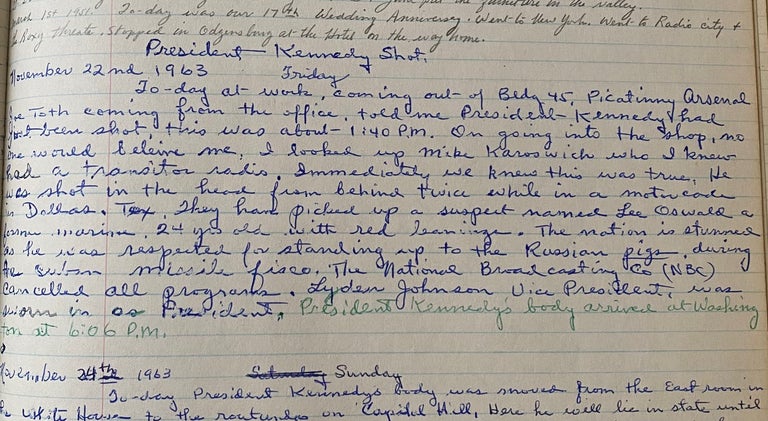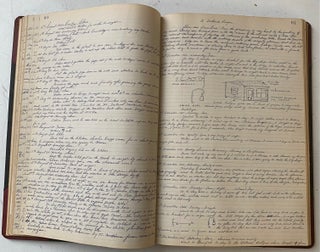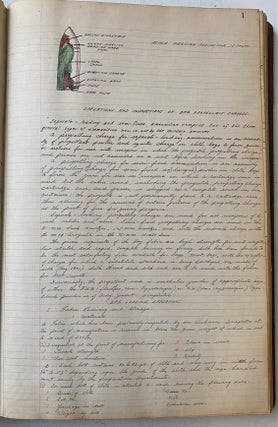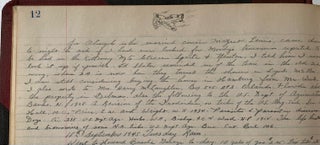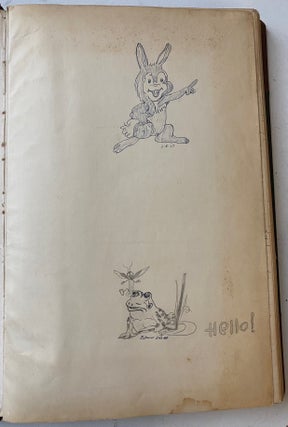HANDWRITTEN DIARY 1944-1970 – METALLURGIST & FREEMANSON, WHARTON, NJ
Item #859
A large (11” w X 16” h X 1 3/4” d), heavy (6 lb., 8 oz.) thick (300-page) tome, this is actually an old-fashioned ledger book (Wilson-Jones Account Book, Model S287) which was utilized as a personal journal.
This was kept by one T. Raymond Lewis, who was awarded a plaque, in April of 1964, for 25 years of service by the American Society of Metals - one of fourteen to be so honored that evening. In the included newspaper clipping about the celebration, Lewis is described as a “heat-treating supervisor in the Inert Components Division of Picatinny Arsenal” in Dover, New Jersey. The article goes on to explain that Lewis “has been employed by the Federal Government for 33 years”. The letter of invitation is also among the documents kept within the journal (none of which are taped or pasted in).
Beginning in September 1944 (starting with intricate notes on the construction of small-arms bullets, and a few pages of entertaining notes on aboriginal anthropology) and for long periods during the next quarter-century (ending with the death of his mother in 1970) Lewis kept notes on his daily activities. He was not careful to record in it every day (months would go by without a single entry, and there are no entries between 1951 and 1963, when JFK’s assassination reawakened his journalizing) nor did he describe his activities at length (many days, a line or three would suffice). Still, Mr. Lewis was quite disciplined, describing the weather, the job, and his mood, in a fine, steady ballpoint cursive, not too shy to add flourishes.
Mr. Lewis was not what we would call an enlightened person, given his attitudes towards and epithets describing the burgeoning civil-rights and pro-communist movements of his era; still, it is fascinating to read his quotidian observations on events such as the Apollo Missions, the first heart transplant or the opening of the 1964 World’s Fair in Flushing Meadows.
Lewis was a decent draftsman and illustrator - occasional pen drawings or schematics are interspersed throughout, better than what could be described as mere doodles. He was also a devoted Freemason, lodge activities taking up much of his time.
Only the first half of the ledger is filled with daily entries; the empty half is used for the storage of various ephemera important to his life. These, numbering in the high dozens, include:
Business cards from Bethlehem Steel; a page from an antiques gallery about the art of Scrimshaw; Two programs from Radio City Music Hall (one, from 1964, featuring a photo of Paul Newman and one of Elke Sommer; letters from the secretary of the local chapter of Freemasons; a map of the D-Day invasion of Normandy, torn from a magazine article written to commemorate its 20th anniversary; letters of solicitation from Conservative Christian organizations (to which Mr. Lewis was apparently a contributor); brochures to sites in New Jersey (Montclair Art Museum, Morristown National Historical Park).
Price: $500.00

